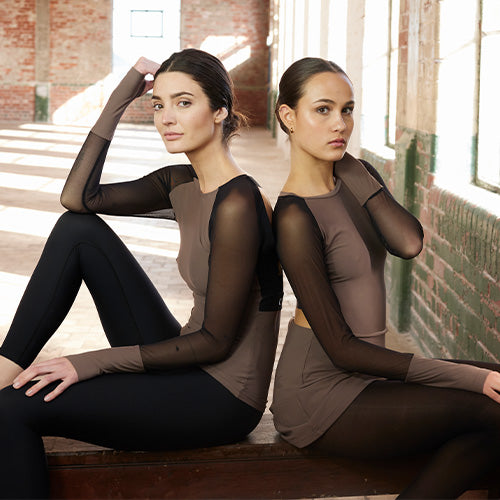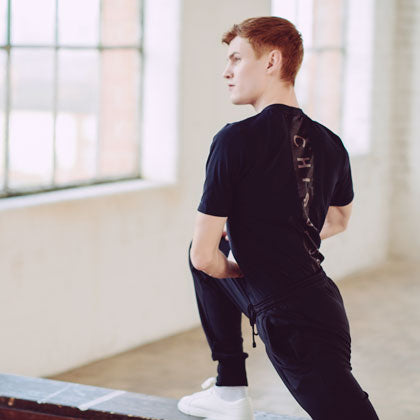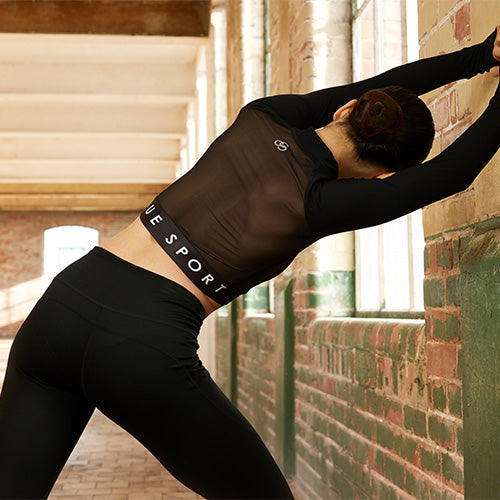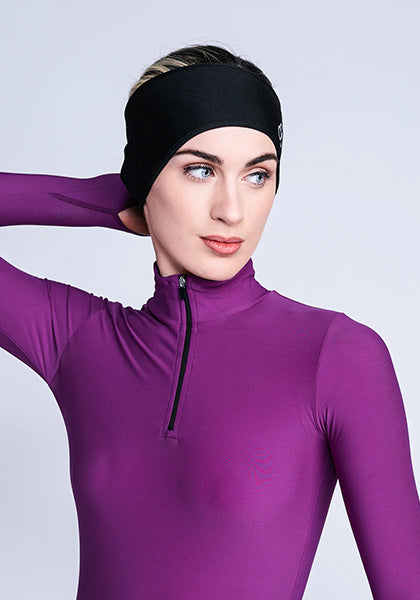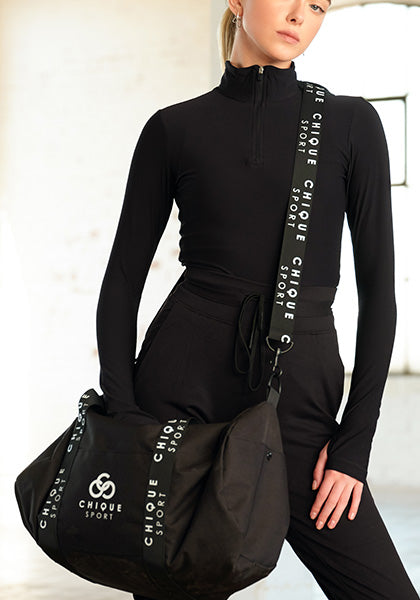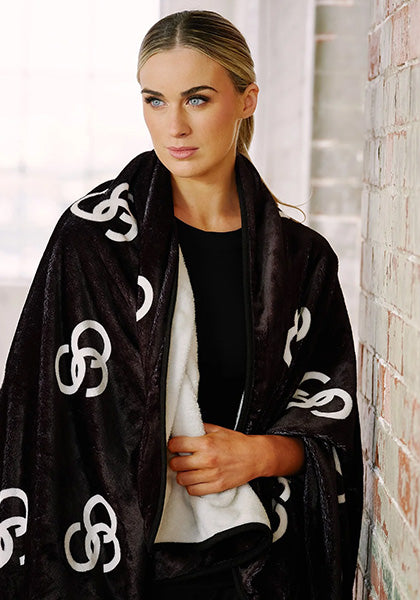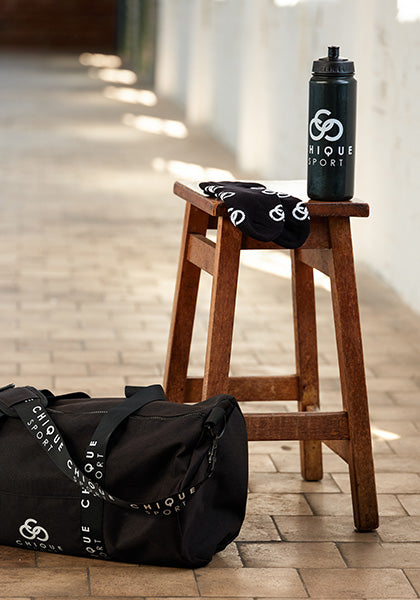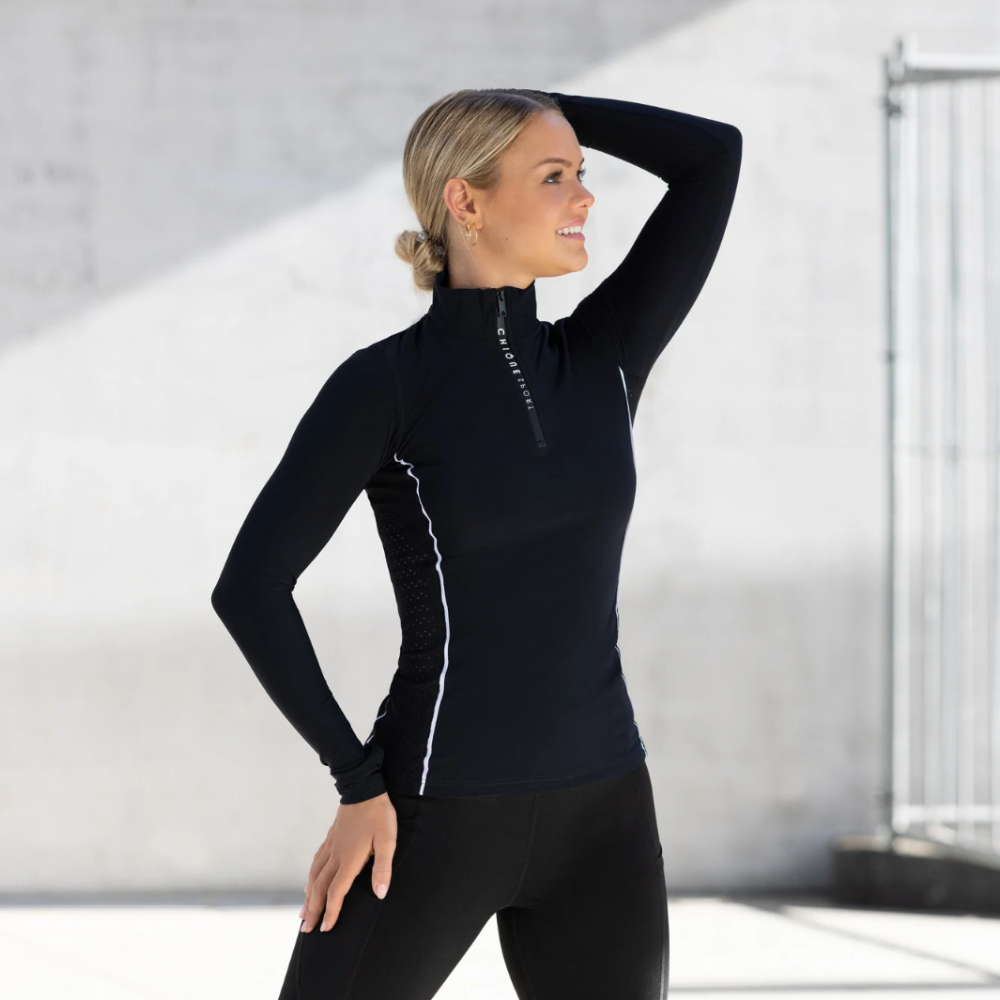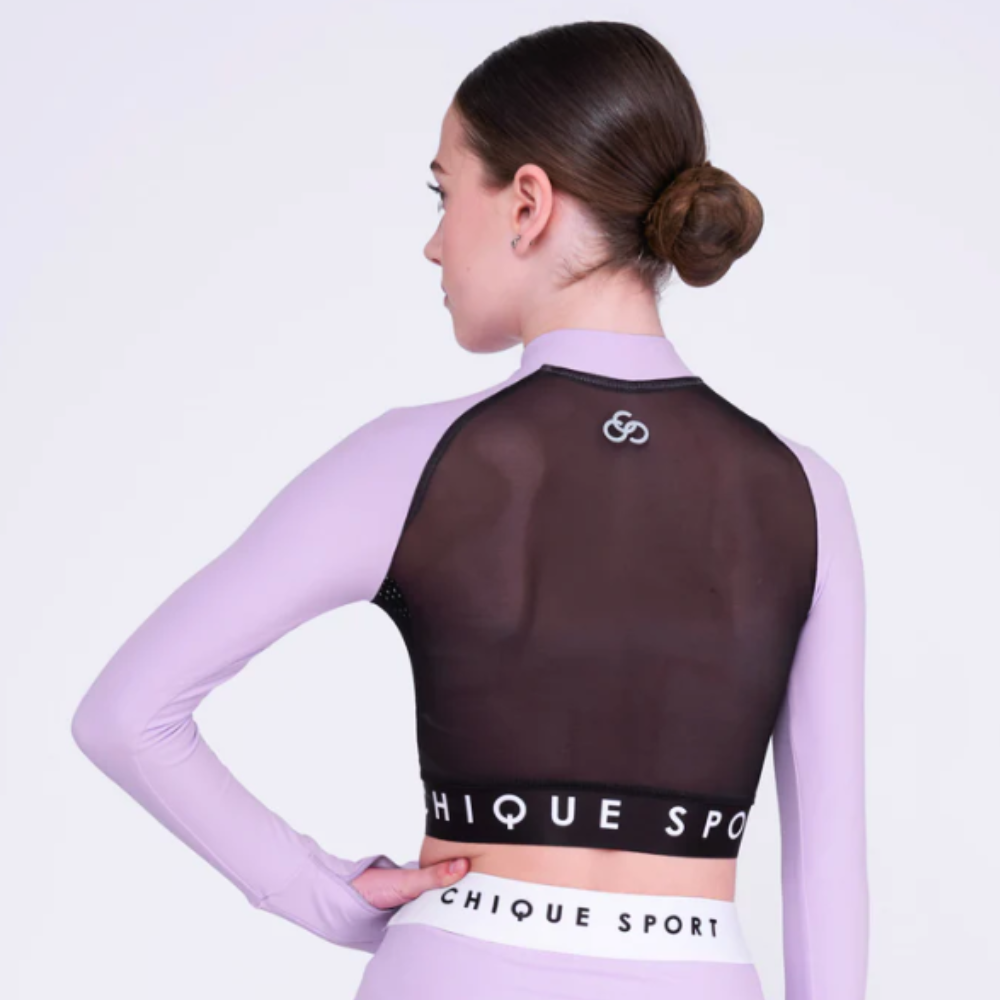Whether you’re learning to land your first Axel, or looking to understand the technicalities of the judges score when it comes to jumps, we’re breaking down each jump so you can truly wrap your head around your favourite elements.
Understanding Figure Skating Jumps
Understanding how a jump starts, the blade's interaction with the ice, and the mechanics of ice skates is key to understanding the success of any figure skating jump.
In identifying jumps, look for the blade's first contact with the ice and how the skater's body adjusts to this moment. Each jump hinges on how well a skater uses either the toe pick – the jagged front part of the blade – or the blade's edges.
Edge vs Toe Pick Jumps
Figure skating jumps can be broadly categorised into two types: edge jumps, which rely on the skater's use of the blade's edges to leave the ice, and toe pick jumps, where skaters use the toe pick at the front of the blade for take-off.
Each of these types of figure skating jumps requires a distinctive technique:
- Edge Jumps - Edge jumps in figure skating are executed using the edges of the skating blade. Skaters glide on either the inside or outside blade edge before launching into the air. These figure skating jumps are characterised by a fluid motion and don't involve the use of the toe pick for take-off. The Axel is a well-known edge jump, notable for its forward take-off and extra half rotation in the air.
- Toe Pick Jumps - Toe pick jumps involve the use of the toe pick - the small, jagged teeth at the front of the skate blade. Skaters use these picks to dig into the ice and push off for the jump. This action provides a powerful lift and is a key feature of figure skating jumps like the Lutz and the toe loop. Toe pick jumps typically have a more pronounced launching action compared to edge jumps.
Top Six Figure Skating Jumps
In Olympic figure skating, only six jumps are officially recognised, each varying in difficulty. The list below ranks these figure skating jumps in order of difficulty, starting from the least challenging to the most complex.
1. Toe Loop Jump
- Jump Type: Toe Pick Jump
- Difficulty Level: Moderate – suitable for intermediate to advanced skaters.
- Point Value: Ranges from 2 to 6 points.
Toe loop figure skating jumps are executed by tapping the toe pick of one skate into the ice, to initiate a backward rotation. Visually this jump appears as a swift, backward leap where the skater uses the toe pick for a powerful launch, followed by a tight rotation in the air, and a smooth landing on the same foot.
To perform a toe loop, the skater glides backward, plants the toe pick of the free leg into the ice, and uses this pivot point to spin into the air, completing one or more rotations before landing. Focus on building a strong backward glide and precise toe pick placement; this will ensure a powerful launch and stable rotation, key for a successful toe loop jump.
Fun Fact! The toe loop jump was popularised in the 1920s by American figure skater Bruce Mapes, and has since become a key element in figure skating routines.
2. Salchow Jump
- Jump Type: Edge Jump
- Difficulty Level: Basic to intermediate – typically learned by beginners.
- Point Value: Ranges from 1.3 to 4.5 points.
The Salchow jump in figure skating is an elegant move, performed by launching from the back inside edge of one foot and landing on the back outside edge of the other. It is characterised by a sweeping entry, a mid-air rotation, and a fluid landing.
When executing this type of figure skating jump, skaters glide into a curve, springing off their inside edge, rotating in the air, and landing on the opposite foot’s outside edge. We suggest maintaining a strong, deep edge on the take-off and focussing on a controlled knee bend.
Flexibility is crucial for the salchow jump, that's why our Womens Ignite Non-Slip Leggings are always a favourite with skaters, as they provide the perfect balance of comfort and grip:
Fun Fact! The Salchow jump is often the first multi-rotation jump learned by figure skaters due to its relatively natural take-off, making it a foundational skill in advancing to more complex jumps.
3. Loop Jump
- Jump Type: Edge Jump
- Difficulty Level: Intermediate – suitable for skaters who have mastered the basics.
- Point Value: Typically ranges from 1.8 to 4.9 points.
The Loop jump in figure skating can be a graceful yet challenging move, executed by taking off and landing on the same back outside edge of the skate. Visually, this figure skating jump is recognised by its tight, circular motion and a clean, singular takeoff and landing on the same foot.
To perform a Loop jump, the skater glides backward on one foot and uses the knee's spring and the ankle's snap for lift, rotates in the air while maintaining a closed position, and then lands smoothly on the same edge. When learning the loop jump, we advise focussing on a steady backward glide and compact air position during rotation.
Fun Fact! The Loop jump is often referred to as a "Rittberger" in many parts of the world, named after Werner Rittberger, the German skater who popularised it in the early 20th century.
4. Flip Jump
- Jump Type: Toe Pick Jump
- Difficulty Level: Intermediate to advanced – suitable for skaters developing more complex skills.
- Point Value: Ranging between 2.3 to 5.3 points
The Flip jump in figure skating is an eye-catching move - it's executed with a toe pick-assisted take-off from the back inside edge and a landing on the back outside edge of the opposite foot. Visually, the Flip jump stands out for its strong backward entry, high-flying rotation, and confident backward landing - it was originally called the "Tulip jump" due to its flower-like appearance in the air.
To perform a Flip jump, skaters glide backward on the inside edge, use the toe pick of the free leg to vault into the air, rotate tightly, and then land on the outside edge of the opposite foot. It's important to practise a deep inside edge entry, and work on the timing of the toe pick launch to enhance the height and stability.
Clothing that offers extra support is always a good idea when learning the flip jump in figure skating. Our Ignite Sports Bra acts as a supportive base layer, and is a great option for cooling off after hot ice skating sessions:
Fun Fact! The Flip jump is often used as a benchmark for skaters transitioning to more advanced techniques, as it requires precise coordination of the toe pick and edge.
5. Lutz Jump
- Jump Type: Toe Pick Jump
- Difficulty Level: Advanced – best for skaters with a strong technical foundation in jumping.
- Point Value: Ranges from 2.6 to 6.0 points.
The Lutz jump is one of the more complex figure skating jumps, performed with a toe pick-assisted take-off from the back outside edge and landing on the back outside edge of the opposite foot. It is visually notable for its extended, backward entry and a deep edge setup, followed by a forceful toe pick launch, a tight rotation in the air, and a smooth landing.
Executing a Lutz involves approaching on a backward outside edge, using the toe pick of the free leg for lift, rotating in the air, and landing on the outside edge of the other foot. Try to avoid a "flutz" - when the skater unintentionally switches to an inside edge before take-off.
Fun Fact! The Lutz jump holds a special place in the history of figure skating, named after its inventor, Austrian skater Alois Lutz, who first performed it in 1913.
6. Axel Jump
- Jump Type: Edge Jump
- Difficulty Level: Advanced – it requires significant skill and strength.
- Point Value: Ranging from 3.3 to 8.5 points
The Axel jump is renowned as the most difficult figure skating jump, consisting of a forward take-off that lands on the back outside edge of the opposite foot. Visually, the Axel stands out for its long forward glide leading into a high leap, with one-and-a-half or more rotations in the air before landing.
An axel jump starts with a forward approach, where the skater leaps off the forward outside edge of one foot, rotates in the air while maintaining a tight position, and lands on the back outside edge of the opposite foot. When practising the axel, try to strengthen your core and leg muscles to support the explosive take-off.
Everybody knows the axel can be tricky to master, so when you're practising this jump opt for clothing that offers more coverage, like a long sleeve top such as our Ignite Long Sleeve Crop Top. This means your arms are covered and protected if you fall and skid across the ice.
Fun Fact! Named after its inventor, Norwegian skater Axel Paulsen, the Axel is the only jump in figure skating that begins with a forward take-off.
Using Figure Skating Jump Elements
Jump Rotations
In figure skating, a jump rotation refers to the number of times a skater spins in the air before landing. The execution of these rotations demands precise timing, significant height, and controlled landing, making them crucial in competitive figure skating scoring.
The most common types are singles, doubles, triples and quads:
- Single Jumps - Singles are basic figure skating jumps, typically performed by beginner skaters.
- Double Jumps - Doubles involve two full spins in the air - these are more advanced figure skating jumps seen at intermediate levels.
- Triple Jumps - Triples jumps, such as the triple axel, involve three rotations. These types of jumps are a staple in higher-level competitions.
- Quad Jumps - Quads are the most challenging figure skating jumps, involving four full rotations. Quads, like the quad Lutz or quad Salchow, are often performed by male figure skaters due to difficulty and strength requirements, although are becoming increasingly more common in women's competitions.
Jump Combinations
A figure skating jump combination is when a skater executes two or more jumps in succession, without any intervening steps or glides. This sequence tests a skater's agility, control, and stamina. To perform a jump combination, a skater completes the first jump, lands briefly, and then immediately takes off for the next jump using the momentum from the first.
Common examples of jump combinations include the double Axel followed by a triple toe loop, or a triple Lutz followed by a double toe loop. Elite skaters might attempt more challenging sequences like a triple-triple combination (e.g., triple Lutz followed by a triple toe loop), which requires exceptional timing and precision.
Jump Sequences
During a figure skating jump sequence, a skater completes one jump, followed by connecting steps or turns, and then launches into the second jump. These connecting movements differentiate sequences from combinations, where jumps are executed back-to-back without interruption.
Common examples of jump sequences include a double Axel followed by a series of turns and then a double toe loop, or a triple Salchow, a few steps, and then a double Axel.
FAQs
What is the hardest quad jump in figure skating?
The hardest quad jump in figure skating is widely considered to be the quad Axel. This jump requires four and a half rotations in the air, combining the complexity of the Axel's forward take-off with the extreme rotational demand of a quad jump.
How do you spot under-rotation in figure skating?
A figure skating under-rotation is spotted by observing if a skater lands on the ice before completing the full rotation required for a jump. This can be seen in the skater's foot position and the direction of their skate blade when landing.
What is a pre-rotation figure skating jump?
A pre-rotation figure skating jump is when a skater starts a rotation on the ice before launching into the air - rather than beginning the entire spin in the air. It's a subtle technique, sometimes seen in the turn of the body and skates before taking off.
How do you get more rotation in figure skating jumps?
To get more rotation in figure skating jumps, practice jumping higher and spinning faster by engaging your core, pulling your arms and legs in closely during the jump, and working on explosive take-off techniques. This helps increase rotational speed and control.
What are the main non-competitive figure skating jumps?
Several types of figure skating jumps are not officially recognised in competitive or Olympic figure skating. Common examples include the waltz jump, the stag jump or the split jump.
Jump in Style with Chique Sport

We take pride in creating sportswear that's not only stylish but also optimised for the demands of figure skating. Our figure skating clothing, worn by top skaters like Loena Hendrickx, is crafted with materials that offer flexibility and support, essential for executing figure skating jumps.
Explore our full range of figure skating training wear below!


